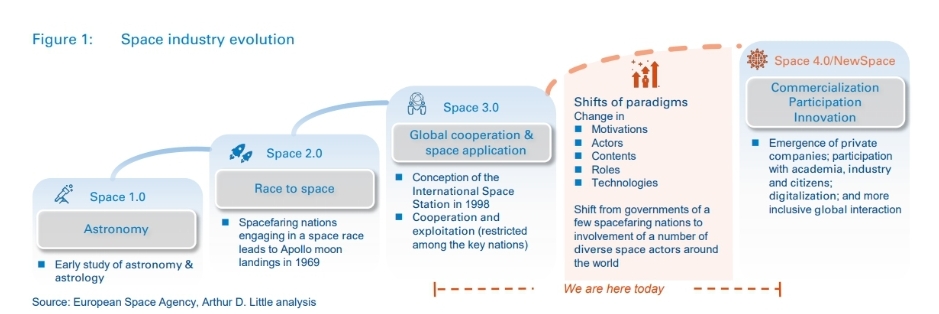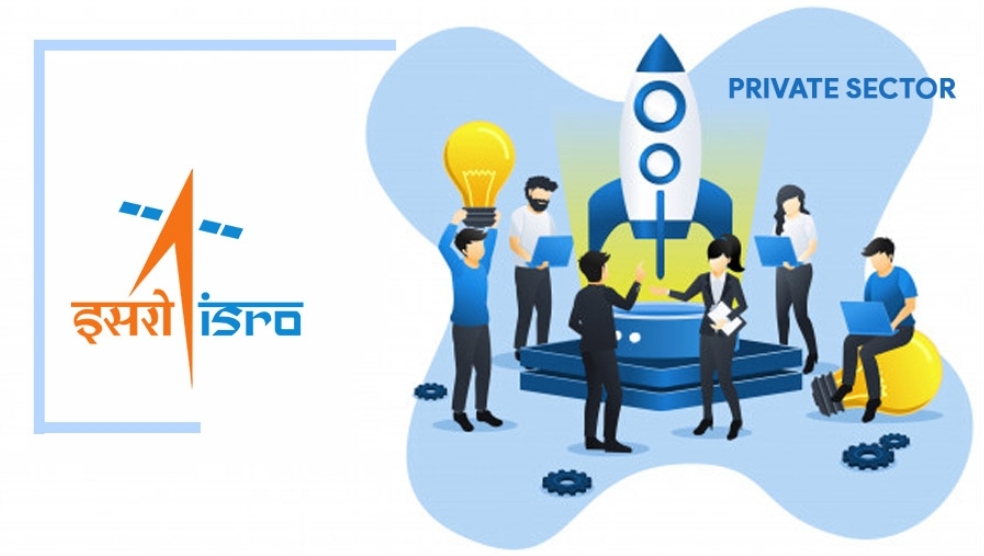In an astounding move, the government paved the way for creation of a new organization parallel to the Antrix corporation which is another PSU working under the department of space to enhance greater inclusion of private participation in India’s space activities.
It is anticipated to be fully operational and viable within six months, to efficiently cater to the needs and concerns of private entities, which would include academic and informational organizations, and also assist in evaluating ways to accomplish such metrics in conjunction and consultation with ISRO.
Furthermore, Established ISRO facilities, both ground- and space-based, scientific and technological facilities, as well as technical information, are expected to be made accessible to stakeholders to facilitate their space-related operations.
Numerous Indian firms seek to build their own satellite and geostationary capabilities and then use the ISRO’s establishments to check their commodities, for which ISRO may charge a premium. Since ISRO is both an attorney as well as the tribunal by owning the technological resources and being the sole enabler of space operations, it is reluctant to forego power. But this specific policy plan may serve as a stimulus.
The new Indian national space promotion and authorization centre (INSPACe) is the 2nd space organization created by the government in the span of the last 2 years. In the 2019 budget, the government brought new space India limited (NSIL), A public sector company that serves as a marketing arm of ISRO. Its main aim is to market the technologies developed by ISRO and bring more clients that need space-based services. However, the government said it was redefining the role of NSIL so that it would have a demand-driven approach rather than the current supply-driven strategy. Essentially, what that means is instead of just marketing what ISRO has to offer, NSIL would listen to the needs of the clients and will ask ISRO to fulfill it, this change in role is essentially a part of reforms that have been initiated in the space sector.

The main premise of empowering outside entities, whether governmental or non – governmental, in the Indian space industry is, in fact, almost as archaic as India’s space campaign itself. Indeed, a significant proportion of the production, manufacturing process, assembling of spacecraft, and fabricating process of satellite communication is now contracted to private entities, there seems to be a significant expansion throughout the engagement of academic and research organizations also. Even so, the Indian industry is unable to adapt and cope up with the steadfast growth in the global space sector and is proved to be inefficient and incompetent to cater the demand and concerns for space-based applications and services within India, Indian industry had scarcely 3% of its share in an exceedingly rising global space ecosystem now worth roughly $360 billion. Merely 2% of such an industry was for spacecraft and commercial launch infrastructures, which need high aspect ratio facilities and fairly substantial capital funding, the remainder 95 percent amounted to satellite-based services and ground-based facilities. The notion was to gradually build capability and enhance the propensity of the Indian industry to expand the industrial infrastructure and establish a production sequence for sophisticated technological advances while incentivizing ISRO to concentrate deeply on Research and development activities, technological innovations, space exploration, infrastructure development, and defense-related functionalities.
ISRO, like many other R&D-oriented institutions in India, or rather like its contemporaries overseas such as NASA, is not designed for large-scale production. For a considerable time, ISRO has also outsourced its research for building fabrication parts and sub-assemblies for rocket launchers and satellite communication to corporations in the public and private sectors, while at the same time undertaking network advancement and operational deployments, launches, and related operations.
As of now, ISRO ‘s workload has significantly increased – presently with about 10 satellite launches per year – and several proposed pipeline undertakings, in addition to increasing launch instructions from overseas, the pressure on ISRO to outsource production tasks has risen dramatically, necessitating more stakeholders, principally those competent of substantially higher system integration.
ISRO has already been cooperating with more than 150 companies, mostly in the private sector, and this collaboration is continuing to increase year over year. For comparative purposes, NASA appears to be working with about 400 private entities. A substantial portion of the structural design of satellites in India has already been administered by oversea agencies.
In the ill-fated Chandrayaan-2 mission, numerous private enterprises, including those of major indigenous engineering contractors and new-age operators, such as L&T, Godrej Group, Laxmi Machine Tools, INOX Technologies and Karnataka Hybrid Micro Devices, played significant roles in the production and manufacturing process and verification and validation of engines, boosters for GSLV launchers and propulsors, etc.
Earlier, proposals about how to stabilize or employ Joint Ventures (JV) for the growth of ISRO’s Polar Satellite Launch Vehicle (PSLV) workhorse will now be operationally defined by the newly established PSU NSIL, leaving just the eventual deployment, supervising, monitoring and telemetry to ISRO.
The legitimate potential implications lie in the manner in which future recommendations in space are contemplated and propelled by the government, rather than by ISRO, which has no other option but to accept.
The dialect used in the context of IN-SPACE, a job is uncannily similar to that used for other regulatory agencies in sectors such as power generation, telecommunications, pensions, and aeronautics – in which the regulator’s brief is to endorse and strengthen the capacity of private sector entities and at the same time to ensure a competitive market between both the private and public sectors.
In reality, that means whittling down the size and structure of the government sector, strengthening the aspirations of private enterprises, with the regulator keeping a firm hand on the latter side of the balance. Such a framework meant the hegemony of economic forces rather than that of socio-cultural concerns and considerations in the perseverance of strategic goals, technology options, operational activities, and cost structure. Practically in all cases, this has culminated in increased prices, lower exposure for vulnerable classes, and the trend of less social assistance than corporate profit.
Commercial entities in India have conventionally and persistently swayed away from technological or structural Research and development activities, so are we prepared and willing to acknowledge that the private enterprise will make investments on space exploration? Except, of instance, the Government has granted those plutocrats exploration or mining privileges on, for instance, the Moon.

If the corporate dynamics and inclinations towards private entities come to dominate, a substantial deterioration in application-oriented space technology can be anticipated, with the state refusing to endorse ISRO and prompting it to accumulate funds from private stakeholders, with the latter being disinterested in many of these initiatives.
Only certain commercial space ventures, including telecommunications and geo-location, may thrive, whilst other application-oriented projects will be overshadowed, leaving only complex and costly space exploration and manned space flights to ISRO, with the government continuously lambasting inflated prices, with hardly any significant and concrete returns as in the US. Self-reliance may also be negatively impacted by commercial stakeholders preferring satellite launch services from other states or entering into a joint venture with oversea commercial entities for satellites, methodologies, and so forth.
The other vulnerability is in critical areas. Several of the space technologies are used both commercially and as military apparatus. ISRO has taken considerable strides to establish and evolve its self-reliant capability in space technology and sharing these resources and infrastructure with the corporate companies, with perhaps the exception of strict regulations, will lead to adverse unintended outcomes.
It does not seem consequential as American firms like Boeing and Lockheed Martin compete and collaborate in both the military and the commercial markets, while NASA does not develop its own space engines – although, in the US, even the private military-industrial complex is actually part of the state.
Regrettably, With the apparent absence of a functional comprehensive Parliament enacted ‘Indian Space law’ or, as ISRO calls it ‘Space Activities Bill’ which has been a draft for the past 3 years, the current regime presumably perceives no menace from expanding and giving access of the defense tech sector to the overseas defense top shots and gleefully facilitates indigenous private companies to coordinate and cooperate with the latter instead if vice versa.
If this is indeed the government’s aspiration of self-reliance, then the pitfalls of unveiling the space industrial sector in the same context are obvious.
With the apparent absence of a functional, comprehensive Parliament enacted ‘Indian Space law’ or, as ISRO calls it ‘Space Activities Bill’ is the major choke point. Which remains just a draft for the past three years.
.Nevertheless, The quest for satellite intelligence, telemetry, imagery and space advanced technology is now slicing throughout industrial sectors, from geographical location to agriculture needs to transportation to rapid urbanization, and many more, and to cater such needs ISRO will have to increase 10 times the current scale to gratify all the demand that emanates.
Written by : Kartikey Giri
SOURCES:
- Indian Express
- Financial Express
- insightsonindia
- newsclick
- https://baliyans.sgp1.digitaloceanspaces.com/Images/d701ab23-f0b8-4a01-8912-60559e6a020b_cea5d10c-0e9d-4ea6-b206-99ace4575db6.jpg
- https://storage.googleapis.com/scrabbl-com.appspot.com/5689915014643712




